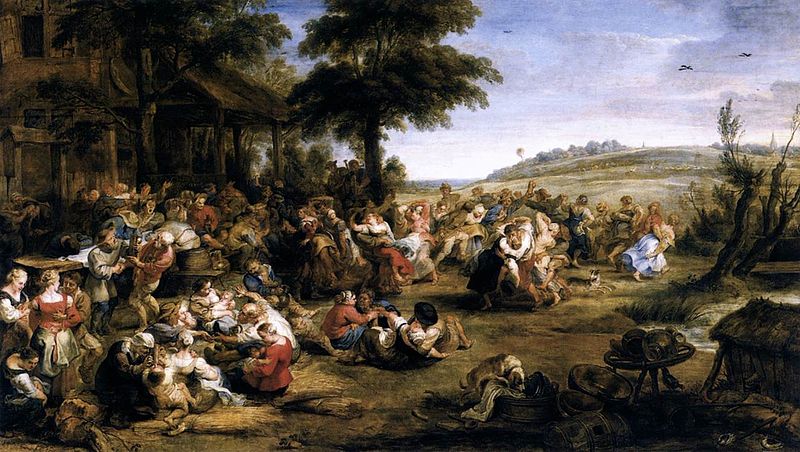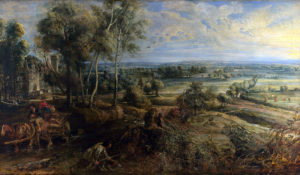by Anne Schuster Hunter
It’s the kind of thing you daydream about as you sit all hunched over at your desk: running around in crisp fall air, singing yourself silly, a dark brew or two and then a nice little nap…. It really lacks only a couple of pumpkin spice lattes and an apple. The Four Seasons’ Autumn is Norman Rockwell, Friday Night Lights, and Oktoberfest all rolled into one. It’s a fall fantasy right down to your toes.
That’s how it plays now, and how it played in the 1700’s. Back in early 18th-century Venice, Vivaldi and his orchestra at the Ospedale della Pietà had a reputation for producing crowd pleasers like The Four Seasons. Vivaldi wrote hundreds of instrumental concertos for the Ospidale—technically a charity for female orphans but in function under Vivaldi’s musical directorship, a high-caliber music conservatory.

What delighted Venice’s lucky locals and tourists is what we respond to now: a concert experience that takes you out of yourself and into a wonderful fantasy place. In the case of Autumn, you almost literally go someplace else. Vivaldi had perfected the tricks of instrumental onomatopoeia by the time he wrote The Four Seasons, and Autumn has some excellent ones, hunting horns and barking dogs and all. At some point, Vivaldi added a descriptive poem to Autumn, as to each of The Four Seasons, to explain what it’s about, “the peasant celebrates with song and dance…the cup of Bacchus flows freely….” You don’t really need it, though. It’s all in your ears.
It grabbed hearts and minds in a way that electrified listeners and excited composers all across Europe.
Infectious music like this is one of the reasons we respond so strongly to the baroque. In the half-century spanning 1700, composers like Vivaldi perfected a musical idiom that amounted to a revolution of immersive sound. You can hear it to grand effect in Autumn: blistering hot violin licks (and Autumn has the flashiest solo parts of all the Seasons), tear-pricking sweetness in the Adagio, sounds and textures swirling through the massed strings, and urgent, propelling bass lines, all anchored by a rock-hard, clear musical structure.
It grabbed hearts and minds in a way that electrified listeners and excited composers all across Europe. Theorists and composers—artists and writers, too—talked about how their greatest achievements lay in reaching the spirit of their listeners through the affetti—big emotions like admiration, love and joy, hatred and desire.
Not just in Italy. French high society threw off its Gallic reserve in cantatas like Louis-Nicholas Clérambault’s Médée, a character piece about the infamous Greek anti-heroine. It’s a great tour-de-force for the soprano—guest soloist Marguerite Krull in Tempesta’s show—as she and a careening ensemble of strings and winds take Medea on a major bad-girl rampage: “Fly, demons, fly/Serve my fatal anger…Let the infernal flame/Destroy this place forever!”
Hey! It’s fall. Come to the Tempesta concert in a Medea Halloween costume and I’ll buy you a pumpkin-spice latte!
Images:
Peter Paul Rubens, The Village Fête (Flemish Kermis), 1635-’38, Musée du Louvre, Paris
Peter Paul Rubens, A View of Het Steen in the Early Morning, 1636, National Gallery, London

